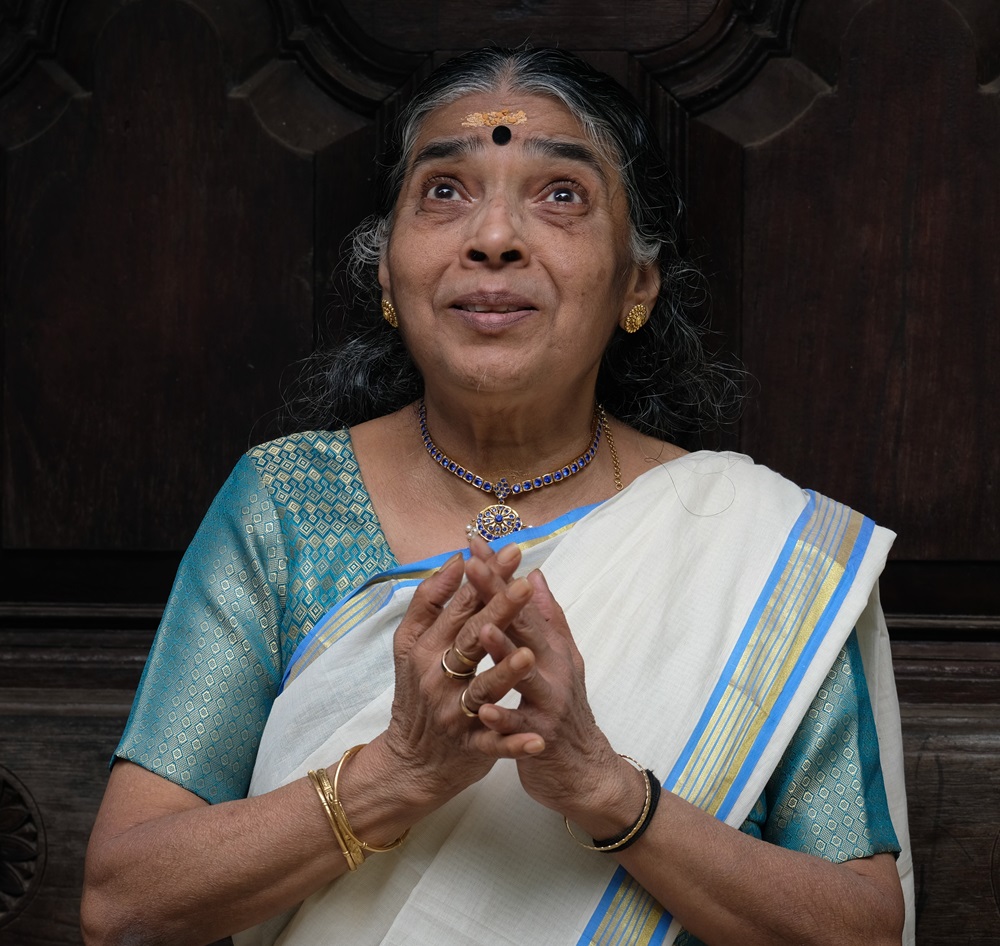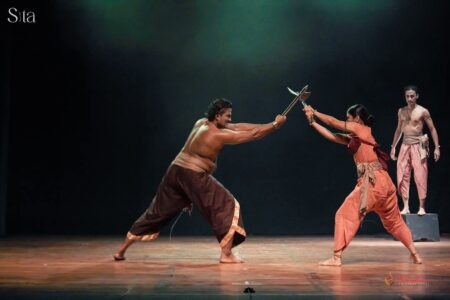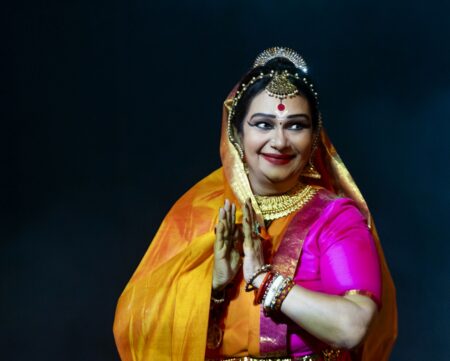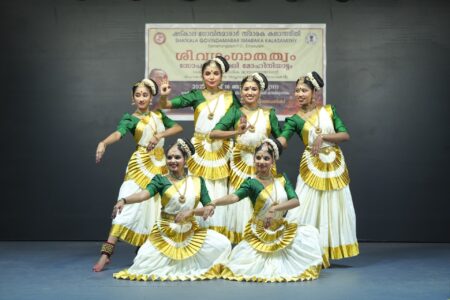The Occult Origins of Mohiniyattam series explored the dance form from its early origins to the present in greater breadth and depth.This article marks the 108th and final part in the series.
Saptam
Saptam is the final and seventh piece in a Mohiniyattam repertoire. This follows the Slokam which symbolises the union of Siva and Parvati, or metaphorically the union of the Jeevathma with the Paramathma.
When the union of Siva and Parvathi happens, it symbolises creation. Thus, Saptham is a dance that symbolises creation and a new birth cycle. One of the last surviving Saptham-s was taught to Kalyanikutty amma by her Guru Appuredathu Krishna Panicker Asan was called Siva Saptam.

Saptam uses Natyam for storytelling. As Mohiniyattam grew, this format was used for enacting many different stories beyond that of Siva and Parvathi. Often a single dancer enacts different characters in the story using the technique of ‘Pakarnnattam’. In the olden days, group choreographies were not common. These days, the Saptam format is used for group choreographies including for Malayalam and Sanskrit poems.
Saptam has an ample mix of Nritha, Nrithya and Natya. Often enactment of each line of the song is separated with a Nritha phrases. I have used this Saptam format of Mohiniyattam to choregraph poems like Leela of Kumaranasan and Palatharamam nadangal of Vailoppilly.
This is the 108th and final article in this series titled ‘The Occult Origins of Mohiniyattam’. We began this series in the India Art Review at a time when Covid-19 was rampant in our community and the world over. We originally aimed for a weekly column that lasted for a few weeks to briefly explore the origins of Mohiniyattam and its evolution through time. But the reception it received was heart-warming and we decided to explore the topic in greater breadth and depth.

We discussed the mythological and historical contexts that illuminate our understanding about the early dance forms that may have paved the way for the emergence of Mohiniyattam. We also discussed the early literary references to Mohiniyattam in 17th and 18th Century. We touched upon the pioneering figures in the modern-day resurrection of Mohiniyattam. Also discussed were the codified movements, Adavu-s and Mandala-s that were incorporated into Mohiniyattam over decades that eventually gave Mohiniyattam the status of ‘classical dance’ that it enjoys.
We also dealt with the vast subject of hand gestures in Mohiniyattam and beyond, including modern day approaches for notation and learning of gestures. In the last few weeks we also learnt the choreographic aspects of Mohiniyattam and major styles of Mohiniyattam including the Sopanam. The revival of Desi tradition that became almost extinct during the time of revival of Mohiniyattam in Kerala Kalamandalam was also touched upon.
It was a gratifying experience to record Mohiniyattam’s evolution as a column in India Art Review and get real-time feedback from several artists, connoisseurs, and admirers of Mohiniyattam. We look forward to compiling these articles in the form of a book soon. We believe it could be of archival value for students of Mohiniyattam and readers interested in the epistemology of Mohiniyattam alike.
In its entirety we wanted the series to shed insights about the ‘inner meaning’ or the essence of Mohiniyattam. We are taking a pause at this juncture, ending this series here. We would like to revisit the topic with a different perspective in future. Until then, we would like to thank India Art Review for the high-quality production and presentation of the articles on the web. We would also like to thank the disciples of Guru Nirmala Panicker who were featured in the photographs and videos that enriched the content and respective photographers.

Sreekanth Janardhanan
Photo Courtesy: Natanakairali Archives




